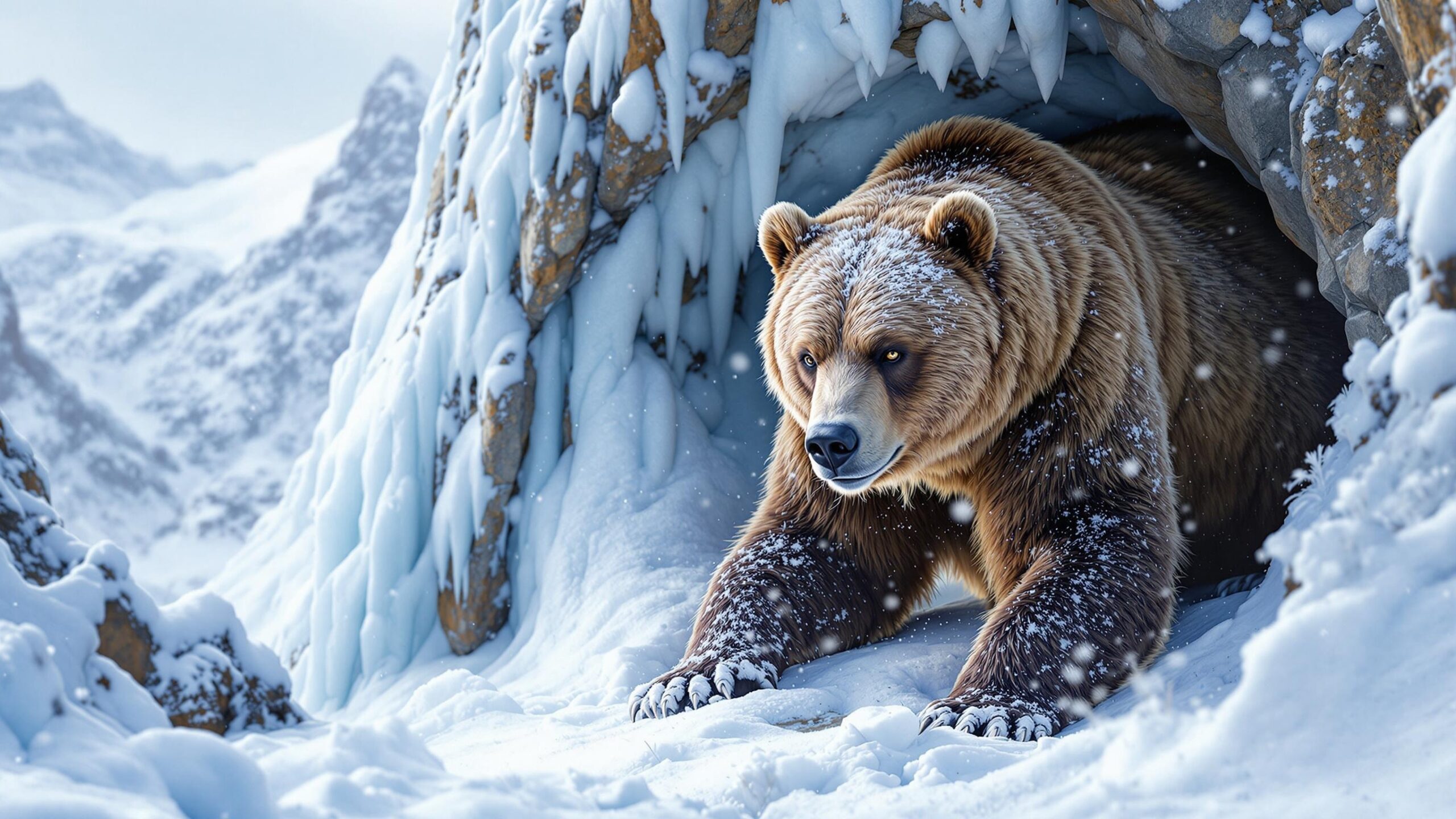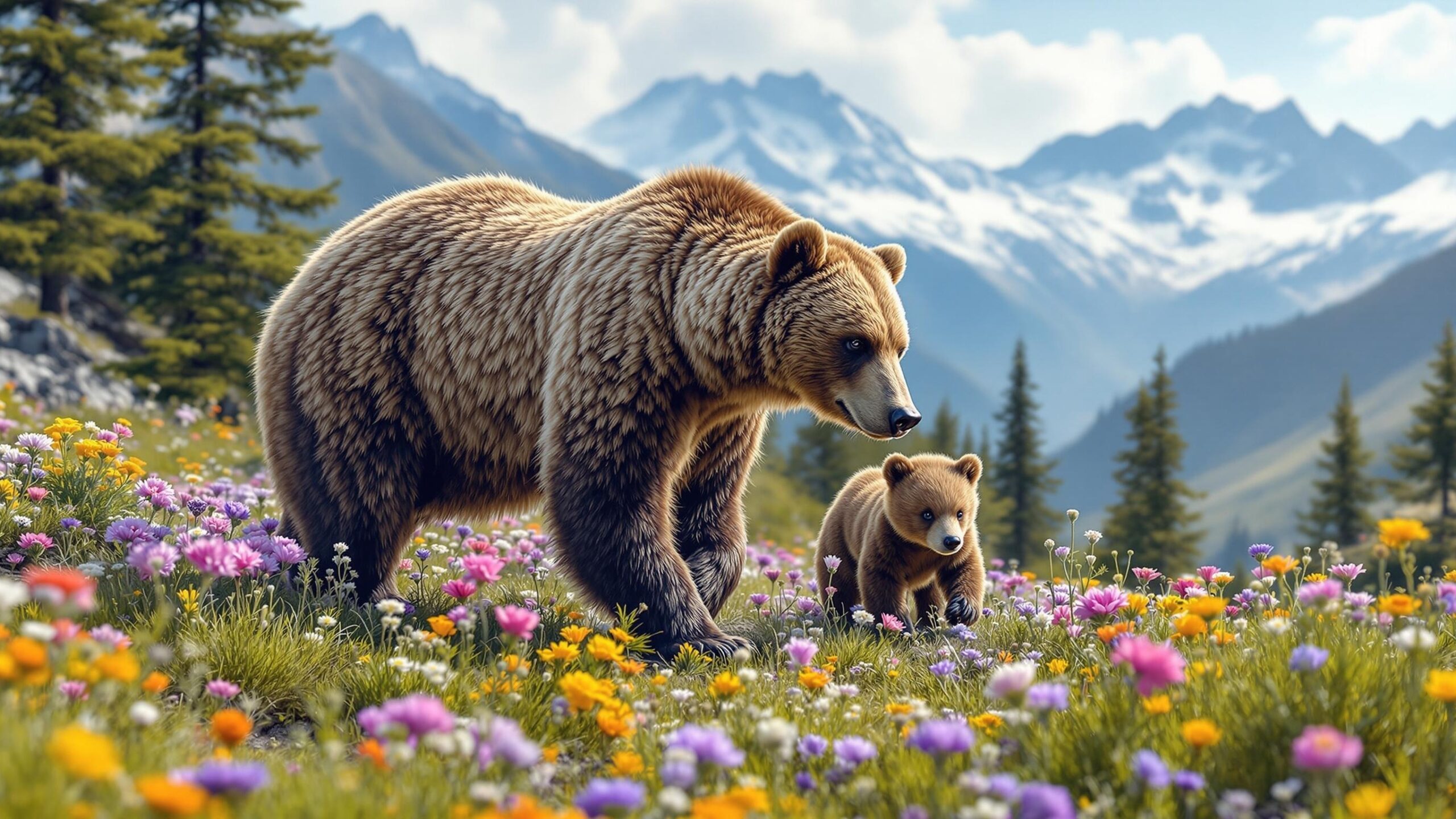Himalayan Brown Bear (Ursus arctos isabellinus): A High-Altitude Giant of the Wild
Amidst the jagged peaks and frigid winds of the Himalayas, one of the world’s most elusive and majestic mammals treads softly across snowfields and alpine meadows—the Himalayan Brown Bear. Scientifically known as Ursus arctos isabellinus, this subspecies of the Brown Bear is a symbol of rugged wilderness, powerful survival, and delicate ecological balance in the high-altitude realms of South and Central Asia.
Revered in folklore and feared for its strength, the Himalayan Brown Bear is a creature of contradiction—both charismatic and critically threatened, gentle-looking and formidable. This article dives deep into the biology, behavior, habitat, cultural significance, and conservation challenges of this remarkable bear, making its way into the hearts of nature lovers, wildlife biologists, and curious minds alike.
Origins and Classification
The Himalayan Brown Bear belongs to the larger Ursus arctos species, which also includes the famous Grizzly Bear of North America, the Eurasian Brown Bear, and several other regional subspecies. It is often referred to as the Isabelline Bear due to its light, sandy-colored fur—a unique adaptation to its alpine habitat that sets it apart from its darker cousins. Taxonomically, it falls within the family Ursidae and is considered one of the oldest lineages among brown bear subspecies. Genetic studies suggest that this lineage may have diverged from other Ursus arctos populations thousands of years ago, developing in isolation within the mountainous corridors of the Himalayas, Hindu Kush, and Pamir ranges.
Where It Lives: Habitat and Range
The Himalayan Brown Bear occupies a sparse and fragmented distribution across the higher altitudes of northern Pakistan, northern India (notably Ladakh and Himachal Pradesh), western Nepal, and potentially parts of Tibet and Afghanistan. These bears are typically found at elevations between 3,000 and 5,000 meters (9,800–16,400 feet), favoring alpine meadows, subalpine scrublands, and rocky slopes with proximity to water sources.
Seasonality dictates their vertical migration. In spring and summer, they forage at higher altitudes where fresh plant growth and small prey are abundant. As autumn arrives and food becomes scarcer, they descend to lower elevations in preparation for winter hibernation. What makes their habitat unique is not just its altitude but also its extreme environmental conditions—short growing seasons, limited vegetation, and harsh winters. Yet, the Himalayan Brown Bear has evolved to thrive where few large mammals can survive.
Physical Appearance and Adaptations
The Himalayan Brown Bear is immediately recognizable by its pale to reddish-brown coat, often appearing golden or sandy in the right light. This coloration, known as “isabelline,” may serve as camouflage in the snow-dusted or sun-bleached high-altitude terrain. Adults typically weigh between 135 to 250 kilograms (300–550 pounds), although some large males can exceed these numbers. Standing on their hind legs, they may reach heights of over 2 meters (6.5 feet). Their limbs are powerful, with long curved claws adapted for digging—an essential skill for unearthing roots, rodents, or creating dens. The bear’s body is thickly furred, helping it endure cold temperatures, and its large, rounded ears and keen sense of smell aid in both foraging and detecting danger. Unlike their more temperate relatives, these bears have evolved a slower metabolism and more cautious energy expenditure—traits that help them survive long periods of food scarcity.
Diet: What Do Himalayan Brown Bears Eat?
Omnivorous by nature, Himalayan Brown Bears maintain a remarkably varied diet that changes with the seasons. During spring and summer, they feed on grasses, herbs, roots, berries, and other high-altitude vegetation. Insects, small mammals like marmots, and bird eggs supplement this plant-heavy diet, offering protein and fat. In some regions, these bears are known to prey on livestock such as goats and sheep, particularly when natural food sources dwindle. This dietary opportunism, while ecologically normal, often brings them into conflict with local herders, exacerbating human-wildlife tensions. Autumn is a time of intense feeding, as bears enter hyperphagia—a biological state marked by binge eating to accumulate fat reserves for the long winter ahead. These reserves are vital for their survival during hibernation, which can last up to six months depending on environmental conditions.

Behavior and Life Cycle
Himalayan Brown Bears are typically solitary creatures, except during mating season or when females are raising cubs. They are most active during dawn and dusk (crepuscular), although this can vary depending on food availability and human disturbance. Mating usually occurs in May or June, with delayed implantation ensuring that the fertilized egg begins development only if the mother has sufficient fat reserves. Cubs—usually one to three per litter—are born during hibernation in winter, typically between January and February, within the warmth of a snow-den.
Cubs remain with their mother for up to two years, during which they learn vital survival skills such as foraging, navigating the terrain, and avoiding danger. These early years are critical, and many cubs do not survive due to harsh weather, scarcity of food, or predation. Communication among Himalayan Brown Bears is subtle but effective. They use scent marking, body language, and vocalizations ranging from growls to snorts to signal their presence or ward off threats. Conflicts are usually avoided through posturing and avoidance, but fierce confrontations can occur, particularly among males during mating season.
Cultural Significance and Mythology
For centuries, the Himalayan Brown Bear has held a mysterious and sometimes fearsome place in the folklore of mountain communities. In Ladakhi and Balti legends, bears are portrayed as wise, sometimes vengeful beings, capable of great strength and cunning. They are often woven into stories about the mountains themselves—symbols of nature’s untamed power. Interestingly, some researchers believe that sightings of the Himalayan Brown Bear may have contributed to the myth of the Yeti or “Abominable Snowman.” Tracks in snow, upright movement, and remote habitats likely gave rise to tales of a giant, ape-like creature wandering the highlands—when in fact, it may have been this very bear. In more recent times, the bear has become a symbol of the need to protect fragile mountain ecosystems. Though still feared for its potential to attack livestock, it is also admired as a rare and majestic survivor of a rapidly changing environment.
Threats and Conservation Status
Despite its strength and adaptability, the Himalayan Brown Bear is among the most threatened bear subspecies in the world. The International Union for Conservation of Nature (IUCN) lists the bear as Critically Endangered in certain parts of its range, including India and Nepal, though its global status falls under the broader category of the Brown Bear, which is of Least Concern.
Major threats to its survival include, Habitat Loss, Human-Wildlife Conflict, Poaching and Illegal Trade, and Climate Change. Conservation efforts are underway in many regions. Protected areas like Hemis National Park in Ladakh serve as vital refuges. Government and NGO-led programs are working to reduce human-bear conflict through community engagement, livestock insurance, and habitat restoration. However, the vast and rugged terrain makes monitoring and enforcement difficult.
A Glimpse into Their World: Rare but Rewarding Sightings
Spotting a Himalayan Brown Bear in the wild is a rare privilege. Wildlife enthusiasts who trek through parts of Ladakh or the Deosai National Park in Pakistan may be lucky enough to catch sight of one lumbering across a ridge or foraging in a high-altitude meadow. These moments, though fleeting, leave a profound impact. Researchers are now using camera traps, genetic sampling, and satellite telemetry to study the bear’s movements, population density, and behavior. Such data are invaluable in shaping future conservation strategies and understanding how these bears are adapting to a world in flux.

The Future of the Himalayan Brown Bear
The story of the Himalayan Brown Bear is one of endurance against overwhelming odds. It is a tale written in the snows of the Karakoram and the windswept slopes of Zanskar—where every footstep, every den, and every surviving cub is a triumph of nature over adversity. Yet, their survival is no longer just a question of natural selection. It depends on the decisions made by humans—by governments, communities, and conservationists. As climate shifts and pressures mount, we are at a crossroads where coexistence must replace conflict, and reverence must replace fear. Protecting the Himalayan Brown Bear is not only about saving a species—it is about preserving a vital part of the mountain ecosystem and a living connection to our planet’s wild heart. Their presence is an indicator of environmental health and a reminder that even the most remote corners of the world are not immune to human influence.
Final thoughts
The Himalayan Brown Bear (Ursus arctos isabellinus) stands as a symbol of wilderness, resilience, and the precarious balance of nature in the high Himalayas. With its striking isabelline fur, formidable strength, and haunting solitude, it captures the imagination and commands respect. But admiration alone will not ensure its survival. Through continued research, community engagement, habitat protection, and thoughtful policy, the bear’s silent paths through snow and stone may echo for generations to come. For the bear, and for the mountains it calls home, the time to act is now.

